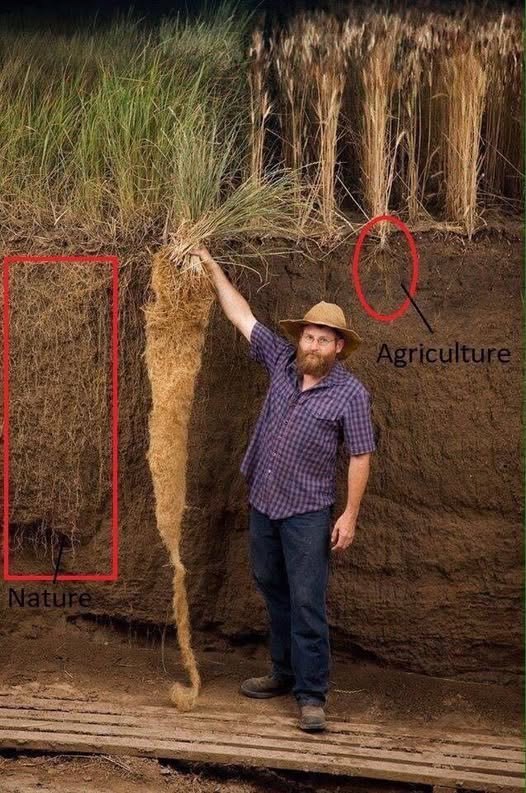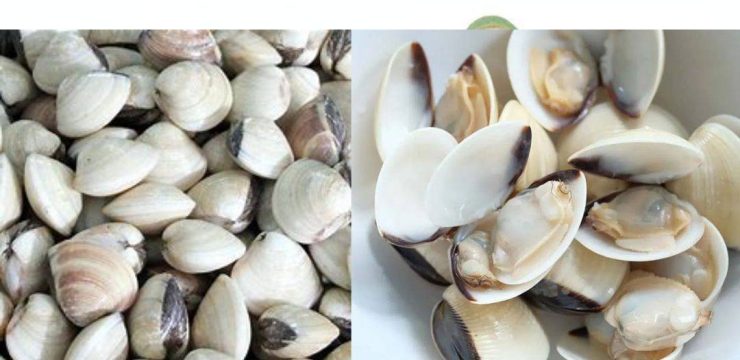When we consider the relationship between nature and agriculture, it’s easy to see them as two opposing forces—nature being wild, self-sustaining, and untamed, while agriculture is organized, human-driven, and focused on productivity. But when we dig deeper, especially starting from the roots, we discover that these two systems are more interconnected than we might expect.

A compelling visual comparison between native prairie grasses and standard agricultural crops highlights this point dramatically. Prairie grasses develop deep and complex root systems that offer vital ecological benefits—they anchor soil, retain water, prevent erosion, and rebuild ecosystems. In contrast, many common agricultural crops have much shallower roots, which can leave the soil vulnerable to environmental stress. This difference had catastrophic consequences in the early 20th century. When farmers across the U.S. converted millions of acres of native prairie into farmland, they replaced deep-rooted grasses with crops that couldn’t perform the same soil-stabilizing functions.
Then, in the 1930s, a series of severe droughts struck, and with nothing to hold the soil in place, the land eroded rapidly. The result was the Dust Bowl, one of the worst environmental disasters in American history, showing just how essential deep-rooted plants are in preserving soil integrity. Nature is incredibly efficient when left to its own devices. Natural ecosystems such as grasslands, forests, and wetlands self-regulate through biodiversity and complex interdependencies. A wild meadow, for example, might contain dozens of plant species that complement one another—some attract specific pollinators, others suppress weeds, and many contribute to nutrient cycling. These systems operate without human interference and are remarkably resilient.
Agriculture, in contrast, involves significant human intervention. It seeks to grow specific crops or raise animals in managed environments. To do this efficiently, humans often manipulate the land through plowing, irrigation, and chemical treatments. While this has led to large-scale food production and supported growing populations, it has also introduced problems. When mismanaged, agricultural practices can deplete soil nutrients, contaminate waterways, and reduce biodiversity. Industrial agriculture, which emphasizes maximum yield, often overlooks the long-term health of the land.
Practices such as monoculture—planting the same crop across vast areas—limit biodiversity and leave crops more vulnerable to pests and diseases. Heavy pesticide and fertilizer use can pollute water systems and harm beneficial organisms. Additionally, deforestation and overuse of farmland degrade the environment and contribute to climate change. But there is an emerging movement offering a promising alternative: regenerative agriculture. This approach focuses on restoring and enhancing the natural processes that sustain the land. Rather than exploiting the soil, regenerative farming builds it up. Techniques like crop rotation, no-till farming, cover cropping, and agroforestry mirror natural ecosystems and improve the land’s ability to support life. These practices encourage healthy soil full of organic matter and beneficial microbes, which in turn improve water retention, increase fertility, and reduce the need for chemical inputs. Regenerative agriculture isn’t just better for the environment—it can also lead to stronger, more resilient farms that can withstand changing weather patterns and market demands. The most important lesson we can take from the roots—both literally and metaphorically—is that nature and agriculture can coexist in a balanced, harmonious way. It’s not necessary to sacrifice one for the other. In fact, agriculture stands to gain a great deal by embracing natural principles. By observing how ecosystems function, how plants support one another, and how soil health sustains life, we can design farming systems that are not only productive but also sustainable for generations to come. Ultimately, it’s not a matter of choosing between nature and agriculture, but rather finding a balance that honors both. If we take cues from the deep-rooted prairie grasses and the lessons of the Dust Bowl, we can begin to shift our approach. By working with the land and respecting its natural processes, we can build a future where farming nurtures both people and the planet. This partnership between nature and agriculture isn’t just possible—it’s essential for a sustainable future.





